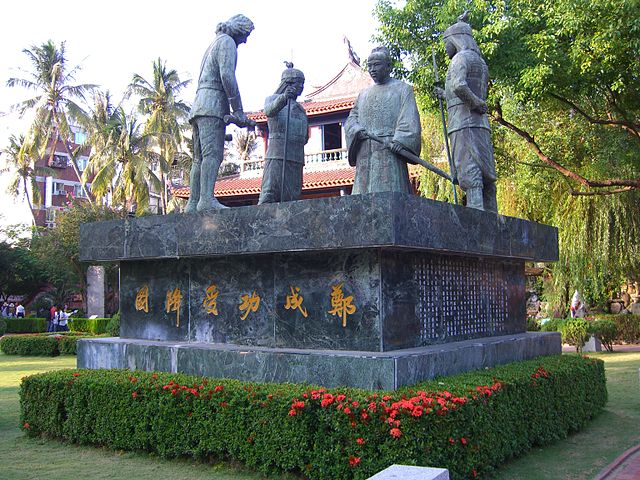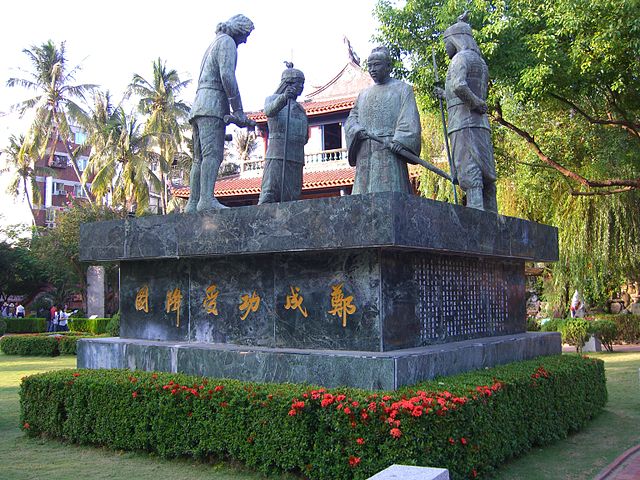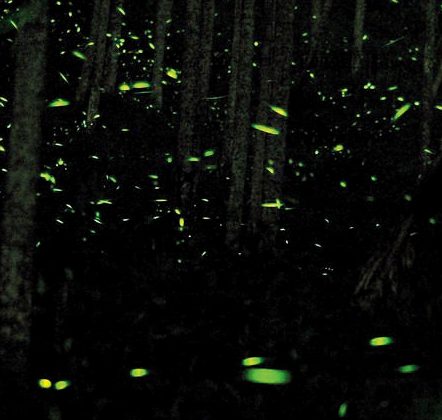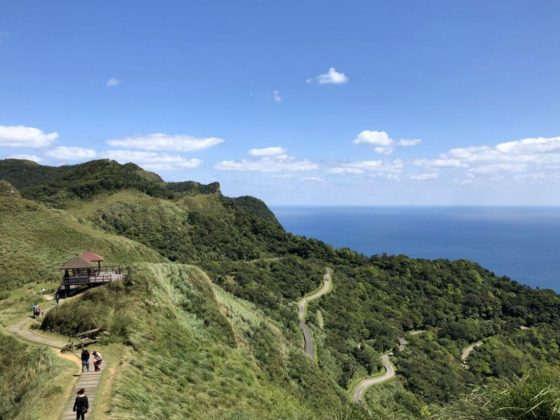Travel should be an adventure. And reading – especially in the case of a book as well written as Joyce Bergvelt’s Lord of Formosa – ought to be one as well. So while it’s a break from tradition for this, primarily a website about Travel in Taiwan, it doesn’t seem like a far stretch to use my column for an old-fashioned book review, especially given that the book in question covers both a key period and key figure in Taiwan’s history.
Lord of Formosa begins in 1624, a year whose importance to the overall development of Taiwan would (like most dates in history) be revealed only in hindsight. In 1624, the Dutch established a trading settlement in southwestern Taiwan, becoming the first European colonists to effectively lay claim to the island. The same year a boy was born in Nagasaki, Japan. The son of a wealthy Chinese merchant and a Japanese woman, the boy was named Zheng Shan. Years later, having proven himself militarily as the Ming dynasty gave way to the Qing, he would be given a new name Chenggong (“Success”). Most people in the western world would come to know him by his title, Koxinga, “Lord of the Imperial Surname”.
Though Chenggong would ultimately fail in his life’s goal to defeat the Qing and restore the Ming, the Admiral achieved a most noteworthy success, for which he is justly remembered in both China and Taiwan: Driving the Dutch from their then-colony Formosa, making him the first Chinese military figure to chalk up a decisive victory in a major clash between Chinese and European forces.
Lord of Formosa follows from start to finish the inexorably linked stories of Taiwan under Dutch rule, and of the man who would bring that rule to an end. Most people in Taiwan (and some students of the history of European colonialism) know parts of the tale, but only in the broadest of strokes.
The statue in Tainan showing Koxinga accepting the surrender of a clearly humbled Frederick Coyett (the last Dutch governor of Formosa, and another of Lord of Formosa’s main characters) following the Siege of Fort Zeelandia tells the end of the story. But history tends to be more nuanced, and while adhering to the historical facts, Bergvelt uses as her literary device a mixture of historical fact and fiction, at least fiction in the sense that many of the thoughts and actions of some of her decidedly historical figures are unknowable.
Not everything is lost in the mist of time, and Bergvelt puts her skills as a journalist (and mother tongue) to excellent use, using as part of her source material the original Dutch version of Frederick Coyett’s Neglected Formosa. The book was written by the last Dutch governor of Formosa (who, despite his efforts, was not rewarded with the Dutch East India Company’s 1662 employee of the year award) following the events depicted in Lord of Formosa and finally immortalized in sculpture in the Chikan Tower courtyard.

It’s probably for this reason the scenes taking place on Formosa from the Dutch perceptive read (to me, at least) almost like journalism, whereas the scenes following Koxinga had a more quasi-fictional feel; not in the sense of being any less grounded in history, but in that they felt more intimate, more romanticized.
Bias may be at play here, both on my part as reader and (possibly) Bergvelt’s as author. Koxinga was clearly a larger than life figure, something probably not true for the doomed-to-historical-footnote status Coyett. And though it’s probably a matter of opinion, the cultural tapestry of 17th century China strikes me as far more colorful, vibrant and interesting as that of the 17th century Holland from which most of the colonists came.
For me, where Lord of Formosa shone brightest were the scenes in which these two narrative worlds collided. About midway through the narrative, the book follows a European doctor from the colony who’s been sent to Koxinga’s camp as a cross between peace offering and spy. The reader gets to see Koxinga through the doctor’s eyes, not just as a legendary, fanatical figure in China’s history, but as a human being suffering from various unmentionable maladies (and a difficult patient at that).
If I have any criticism of Lord of Formosa at all, it’s the same criticism I’ve had of history in general since around the time I was old enough to stop believing in fairy tales. As the narrative progressed to its final, well-documented conclusion, I was increasingly less sure of which side to root for. Though both men are painted as “honorable by the standards of the time”, neither Koxinga nor Coyett (nor, for that matter, their many allies/minions) seemed like the sort of people I wanted to hang out with.
One scene in particular drove home the “honorable by the standards of the time” thing for me: A Dutch girl who’s being held hostage is brought to Koxinga to be raped. Recalling his own mother and sister, both of whom had been raped by Manchu soldiers as the last Ming strongholds in China fell, the Admiral spares the girl, but not before having her roughed up a bit so as to not allow his underlings to mistake his mercy for weakness (or impotence) on his part.
Another author might have chosen to have painted Koxinga’s action as chivalry. Bergvelt does not, making it clear Koxinga believes raping an enemy’s daughter to be perfectly permissible by the standards of the time, and chooses not to out of filial piety rather than enlightenment. The author’s choice to do so speaks to her clear-eyed and unflinching approach to her subjects. As the story progresses and Koxinga becomes increasingly admirable from a military perspective, he becomes increasingly damaged as a human.
Which is likely not far from reality. War is hell. Hell breeds demons.
I began this column with a quip on travel, so it feels right to end on a similar note. Lord of Formosa was my travel companion during a recent trip to Tainan to research a few of the more traditional travel stories about Tainan you’ll find on this site. In creating my itinerary, I specifically avoided the aforementioned Fort Zeelandia and Chikan Tower. Both are considered Tainan must-visits, and I’d “must-visited” both on multiple occasions.
However, as timing would have it, I finished Lord of Formosa in the hotel on the trip’s last night, and though I’d originally planned to head back to Taipei early the next day, instead I headed out to Fort Zeelandia and spent an hour walking around the area.
Little of the area would have been recognizable to either Koxinga or Coyett, time and tides having altered the landscape dramatically, but on this trip I felt a historical gravitas that had eluded me on previous visits. On the way to the train station, I headed over to Chikan tower to look once more at the sculpture I’d seen many times before. The scene felt more real to me than it had before, almost uncomfortably intimate. I found myself feeling something; perhaps not sympathy but empathy for Koxinga, Coyett, and the countless long-gone people on both sides of their historic struggle.
~~~
Lord of Formosa is available from Camphor Press.
Looking to experience Ancient Tainan? MyTaiwanTour can make it happen.
Read more:
Exploring the History, Handicrafts and Culture of Tainan City
Remembering Taiwan’s Kinkaseki POW Camp on Tomb Sweeping Day












